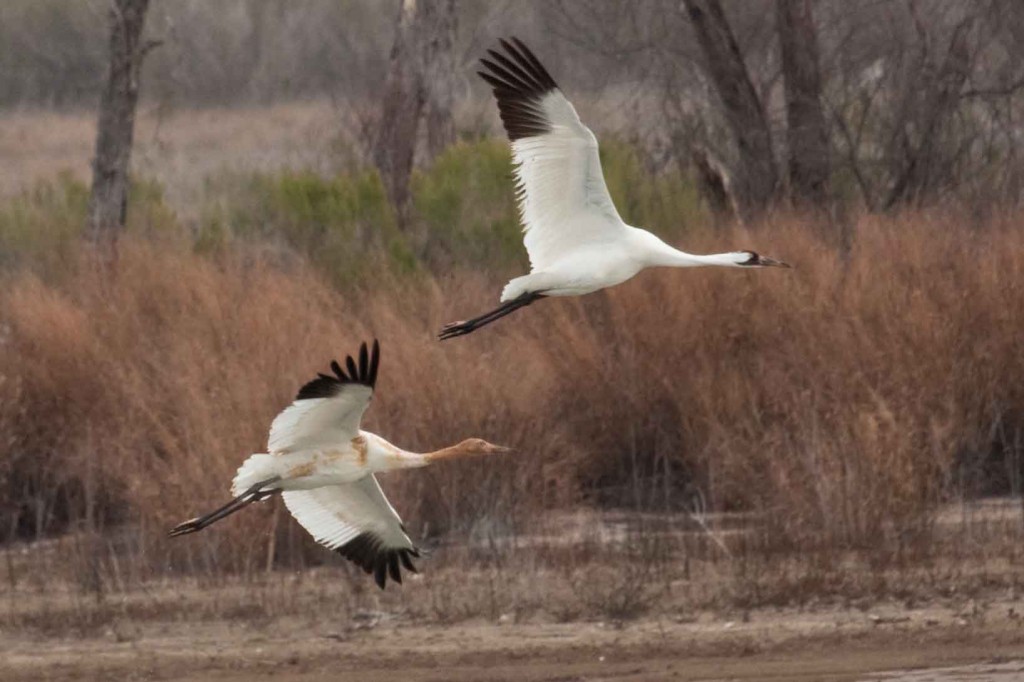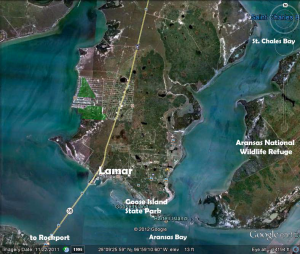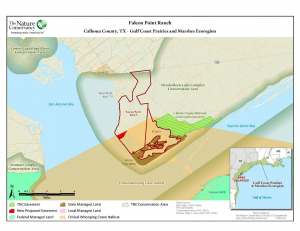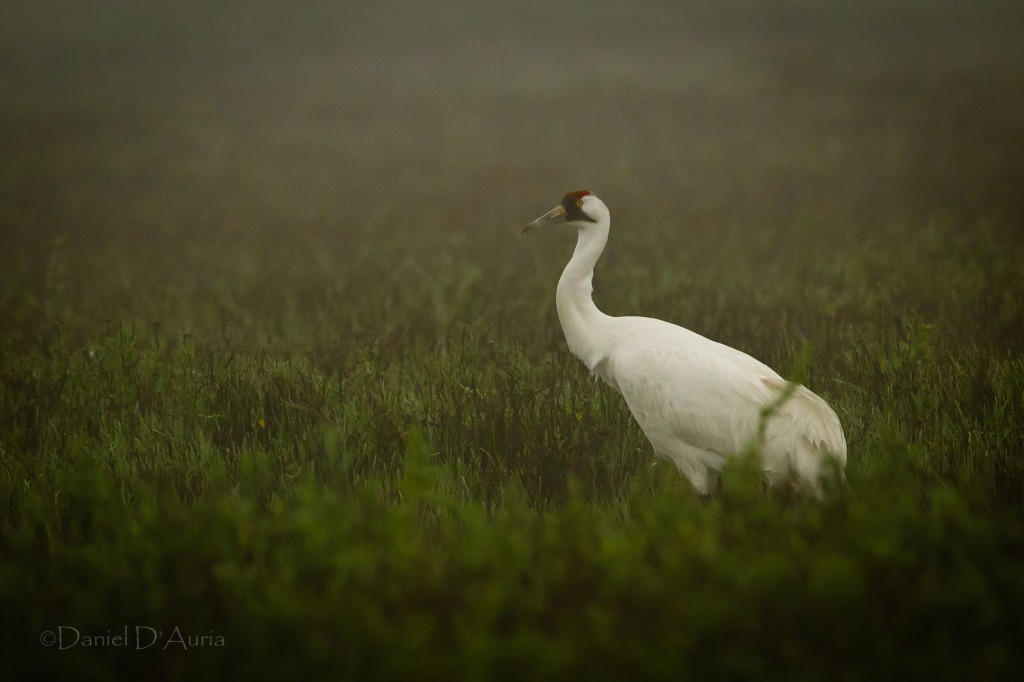Archive for the ‘Flock Status’ Category
Tracking Whooping Cranes – Telemetry Update
September 1, 2012Article courtesy of Crane Trust
The Crane Trust continues to gain momentum in their efforts to contribute to conservation and the preservation of the whooping crane and other migratory birds. The Whooping Crane Conservation Association applauds their work and believes viewers of our web page will appreciate reading one of their recent reports. The following is an excerpt from Crane Trust’s July-August newsletter.
The Crane Trust is one of five research groups involved in a remote-tracking study of whooping cranes in the world’s only self-sustaining flock—the Aransas-Wood Buffalo population, comprised of fewer than 300 cranes. Findings from the study will help the Trust and its partners better understand the ecology and threats to whooping cranes on their wintering grounds, breeding grounds, and their 2,500-mile migration route through the Central Flyway. Twice each year, the Whooping Crane Tracking Partnership publishes an update on its progress and findings. For the two latest reports on progress and findings, click downloads below. Above photo courtesy of Michael Sloat.
2011 Fall Report DOWNLOAD (2011 summer breeding/fall migration)
2012 Spring Report DOWNLOAD (2011-2012 winter season/spring migration)
You can download the two most recent reports at the end of this summary. Of note, the study’s research team has improved its methods of trapping and continues to catch and mark young and adult whooping cranes with GPS transmitters on both breeding and wintering grounds. For each bird, the solar-powered transmitters provide up to 4 signals a day for the life of the device (3-5 years). In the winter of 2011, that amounted to more than 11,000 locations for tracking and analysis. To read the entire article click on following link: http://www.cranetrust.org/newsletter/july-august-2012/tracking-whooping-cranes-in-space-and-time%E2%80%94telemetry-update/
State of The Whooping Crane Flock 2011-2012
July 9, 2012by The Aransas Project
July 9, 2012: The Aransas Project (TAP) prepared this State of the Flock 2011-2012 report to provide critical information to our members and to the public regarding the well-being of the Wood Buffalo-Aransas Whooping Crane flock after the 2011-2012 wintering season.
Whooping Crane Flock Numbers Plunge during Winter 2011-2012
A recent news release issued by the Southwestern Region of the United States Fish and Wildlife Service (USFWS) confirms that the winter of 2011-2012 was one of the worst winter seasons in Texas for the Wood Buffalo-Aransas flock, the last remaining natural flock of Whooping Cranes that winters at Aransas National Wildlife Refuge (see Figure 1).
USFWS official reports put the flock size at the end of the previous winter of 2010-2011 at 279 cranes. In the winter of 2011-2012, on the aerial surveys in late January 2012, USFWS counted only 193 birds and then used statistical methods to extrapolate from that number an estimated flock size of 245. This statistical estimate represents a decrease in flock size of 12.2% from the previous winter. This represents one of the largest declines in flock size ever recorded.
Despite these facts, USFWS officials have made several public statements, including “The flock is so large they can’t count individual birds,” that paint an overly optimistic, and ultimately misleading, portrait of the state of the Aransas-Wood Buffalo flock.
“The recent statements attributed to USFWS leave the public with the impression that the flock numbers are up,” says TAP legal counsel Jim Blackburn. “Yet, according to their own official reports, there are fewer birds. Any way you do the math, 245 is less than 279.”
Based on the aerial survey in late February 2012, USFWS reports that the flock size was estimated to be 196, notably less than the previous estimate of 245.
“Recent public statements by USFWS officials at the Refuge paint a rosy picture of the health of the flock when the scientific record says otherwise,” says Blackburn. “The facts are these—the size of the flock, even by USFWS’ own estimation, is lower than during the prior year, and the scientific record from electronically-monitored cranes in the flock suggests more cranes may have died than in the drought of 2008-2009, which was the highest mortality ever recorded. But we’ll never know what really happened, because USFWS has abandoned the methodology of counting individual cranes each month, as was done for 29 years, and instead has resorted to distance sampling of the birds, from which they then statistically extrapolate to provide an estimate of the flock size.”
USFWS Methodology Faulted
Beginning in the winter of 2011-2012, USFWS altered its methodology for tracking how many cranes are in the flock. “Every year but this year for 29 years, the former refuge biologist, Tom Stehn, did monthly flyovers during the wintering season and methodically counted every crane on the refuge, using both territories and defined transects to identify the birds,” says Blackburn. “This year the refuge didn’t do a census to count the cranes as they have every other year, but instead used a sampling method and also decreased the frequency of the flights.” Blackburn says TAP believes this methodology to be less reliable.
Stehn himself questioned the validity of the USFWS sampling methodology in a recent interview with the Corpus Christi Caller-Times. In the interview, Stehn noted that the current sampling methodology used by USFWS, known as “distance sampling,” has an error range of 15%, which Stehn believes is far too high when dealing with a population of fewer than 300 endangered cranes.
Stehn told the Caller-Times, “I’m really frustrated and disappointed with the changes in the census the refuge has made. It’s simply not accurate enough when you’re dealing with such a small population of endangered birds.”
Stehn noted that the aerial census methodology he employed for nearly 30 years used flyovers on a much tighter grid and allowed him more flexibility to conduct more thorough searches off the search grid.
USFWS has cited the growing number of cranes in the flock as its justification for resorting to a sampling and estimating approach, rather than actual counting. Blackburn comments, “We don’t really understand that, because Tom Stehn seemed to manage just fine with more cranes. Recent statements by USFWS would make you think that they were covered up in cranes down there, which even their estimates don’t support.”
Tracking Data Suggests Unprecedented Crane Mortality
Recent statements by USFWS also create the impression that the number of cranes that died this past winter was far less than during the drought of 2008-2009 because fewer crane carcasses were found. A recent sworn statement filed by Whooping Crane expert, Dr. Felipe Chavez-Ramirez, the principal investigator in an ongoing research project electronically tracking 31 cranes in the Aransas flock using GPS bands, suggests that crane mortality may actually be higher than USFWS reports indicate.
According to Dr. Chavez-Ramirez’ statement:
- The carcasses of three juvenile cranes were recovered during the 2011-2012 wintering season
- Out of the 31 banded cranes, this is a mortality rate of 9.6%
- Out of the ten banded juvenile cranes, the mortality rate is 30%
- The documented mortality rate of 9.6% in this monitored subgroup of birds is “unprecedented” and exceeds the previous high mortality rate of 8.5% during winter 2008-2009
Blackburn says this scientific evidence suggests that more cranes may have perished due to the drought in 2011-2012 than in the prior drought of 2008-2009. “It seems like USFWS is sticking their heads in the sand down there in terms of the health of the flock,” says Blackburn.
Conclusion
The Aransas Project continues to seek responsible water management of the Guadalupe River Basin to ensure adequate freshwater inflows to the bays and estuaries that provide the winter habitat for the endangered Whooping Cranes. Until this problem is addressed, the future health of the bays and estuaries and of the Whooping Cranes will not be secure. “What we need, and should expect from USFWS, is a clear-eyed, scientific view of the state of the flock,” says TAP Regional Director Ron Outen. “TAP feels that residents of the Coastal Bend and the broader public need to know what is happening down here. We hope that it contributes to a better understanding of this critical and ongoing issue for the state of Texas.”
Leave a Comment
Remote Tracking of Aransas-Wood Buffalo Whooping Cranes
June 25, 2012by: Chester McConnell, WCCA
Several government agencies and private organizations have formed the Whooping Crane Tracking Partnership (WCTP) to determine, more specifically, the migration path and activities of whooping cranes that migrate between Aransas National Wildlife Refuge, Texas and Wood Buffalo National Park, Canada. The WCTP trapped whooping cranes, made health checks and collected blood and other biological samples. Then they placed on each crane a Global Positioning System with Platform Transmitting Terminals device as a way to identify migration pathways for the Aransas-Wood Buffalo whooping cranes. WCTP recently released a report covering the 2011 breeding season and fall migration.
The WCTP gathered detailed information concerning where 23 whooping cranes spent time at and the length of time they remained at various locations during the 2011 breeding season and fall migration. Highlight from the report described one adult crane nesting during the summer 2011 but was observed without young during fall migration. Tracking data showed one 1-year- crane spending the summer in southern Saskatchewan and northern North Dakota.
Migration travel time between the Wood Buffalo summer nesting area in Canada and the wintering habitat at Aransas, Texas varied for different whooping cranes. Some of the 23 cranes with GPS were migrating during a 79 day period. The first cranes began migration on September 10 and all cranes that completed migration arrived on the Texas coast by November 27.
Mortality during migration is important to understand. The WCTP confirmed one mortality of the 23 GPS whooping cranes during migration. This was a juvenile crane that died in early November. WCTP plans future trapping efforts for August 2012 at Wood Buffalo National Park and during winter at Aransas National Wildlife Refuge. Hopefully the study will help to better understand whooping cranes and management needs. The report includes much interesting information.
The entire WCTP report with a map can be read by clicking on the following link: http://www.cranetrust.org/wp-content/uploads/2012/06/Whooping-Crane-Tracking-Partnership-2011-breeding-and-fall-update.pdf
Man Indicted For Killing Whooping Crane and Witness Tampering in South Dakota
June 18, 2012June 18, 2012
United States Attorney Brendan V. Johnson announced that a Miller, South Dakota, man has been indicted by a federal grand jury for Violating the Migratory Bird Treaty Act and Witness Tampering.
Jeff G. Blachford (Facebook Profile), age 25, was indicted by a federal grand jury on June 12, 2012. He appeared before United States Magistrate Judge Mark A. Moreno on June 15, 2012, and pled not guilty to the indictment. The maximum penalty upon conviction is 20 years’ custody, a $250,000 fine, or both; not more than 3 years of supervised release; and a $100 special assessment. Restitution may also be ordered.
The charges relate to allegations that in April 2012, Blachford shot and killed an endangered whooping crane and one hawk in Hand County, approximately 17 miles southwest of Miller, South Dakota. Blachford is further alleged to have corruptly persuaded a witness to withhold information from law enforcement officials. The charges are merely accusations, and Blachford is presumed innocent until and unless proven guilty.
Whooping cranes are one of the rarest birds in the world with a total population of approximately 600 individuals. The whooping crane killed in this investigation was one of about 300 endangered cranes that migrate from wintering grounds along the gulf coast of Texas to the Woods Buffalo State Park located in Alberta and the Northwest Territories of Canada. This population of whooping cranes is the only self-sustaining population in the world.
The investigation is being conducted by the U.S. Fish and Wildlife Services and South Dakota Game Fish and Parks. The case is being prosecuted by Assistant United States Attorney Meghan N. Dilges. Blachford was released on bond pending trial.
The Whooping Crane Conservation Association is very pleased with the indictment by the federal grand jury. However, the Association cautions that the case must still be brought to trial and a conviction made before justice is served. The Association has a $10,000 Reward for the “conviction” of the person(s) responsible for the senseless killing of the whooping crane. Contributions to the Reward Fund are stil needed. The public is urged to donate to the fund to help convict this and other whooper killings.
Donations (which are tax-deductible) are being requested for the Whooping Crane Conservation Association’s Reward Account. The public is encouraged to donate to this fund. Donations should be mailed to Whooping Crane Conservation Association, 2139 Kennedy Avenue, Loveland, CO, USA 80538 or to donate by credit card click on the link: https://whoopingcrane.com/whooping-crane-shot-10000-reward/
Lobstick Whooping Crane Feared Shot In South Dakota
June 7, 2012Article from Northern Journal, Fort Smith, NT Canada (www.srj.ca).
By CHRIS TALBOT, Northern Journal Reporter, • Tue, Jun 05, 2012
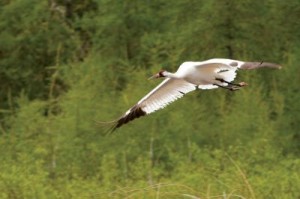
Fort Smith local Ronnie Schaefer believes the whooping crane (like the one pictured here) shot in South Dakota was one of the famous Lobstick pair. (Photo: Klaus Nigge)
A whooping crane recently shot in South Dakota may be one of the famous Lobstick cranes that nest north of Wood Buffalo National Park, according to a Fort Smith man. Ronnie Schaefer, who has observed the cranes for many years, told Northern Journal he believes the crane shot en route to Canada is one of the Lobstick pair. The pair has made the Fox Hole prairie on Salt River First Nation land home for 19 years, usually arriving in the first two weeks of May. They have not arrived yet.
Another reason Schaefer believes it may be one of the Lobstick birds is because they are not tagged. Although not confirmed, it is believed by Parks Canada that the crane shot in South Dakota was likewise not tagged. Schaefer said he is trying to clarify that, but so far, the U.S. Fish and Wildlife Service (FWS), which is investigating the shooting, has been tight-lipped about the case.
Brad Merrill, a spokesperson for FWS Mountain-Prairie Region, said it is FWS policy not to discuss cases still under investigation. He did confirm that the crane was travelling with another adult and a juvenile, both of which were seen in the same corn field where the shooting occurred. What happened to the other cranes is unknown.
“It’s a big loss for us because they’re a recognized pair from here to Aransas,” Schaefer said.
The Fox Hole prairie is the traditional nesting ground for another pair of whooping cranes, which Schaefer said has already arrived and settled in. A new nesting pair has also settled in the area, but Schaefer noted it is not the Lobstick pair.
Others believe it is too early to tell for sure if the killed bird was indeed one of the famous cranes.
“That would be really tough to deduce based on what we know,” Dan Alonzo, refuge manager at Aransas National Wildlife Refuge, told The Journal.
Chester McConnell, trustee emeritus at the Whooping Crane Conservation Association, told The Journal it would be a great loss should the shot crane be one of the Lobstick pair.
“It would be, but I’m not certain (Schaefer) would be correct on that. I don’t know what information he has, but the cranes haven’t been long settling in and some of them would take a little while to settle into nesting,” McConnell said.
According to McConnell, whooping cranes do not all fly in and start building nests right away. Though their time to nest is short, they are known to “fool around.”
With only about 300 whooping cranes migrating between Wood Buffalo National Park and Aransas National Wildlife Refuge in Texas, the loss of any of the endangered birds is significant, Alonzo said. There are approximately 500 whooping cranes left in the world.
“It would be the equivalent to the loss of any other bird,” Alonzo said. “Any loss is significant. We want to do anything to deter that. The Lobstick or any other pair is just as important.”
One death of many
The shooting of the whooping crane in South Dakota is the latest in a dozen confirmed shootings of the species since 1951. Approximately 80 whooping cranes of the western migratory flock have also gone missing during that time, their fates unknown, McConnell said.
Cranes that do not die of natural causes are most likely to be killed flying into power lines or electrified fences, he said, but some people shoot the birds out of malice.
The eastern migratory and non-migratory Louisiana populations suffer even more from human predation. McConnell noted 11 cranes in the eastern and Louisiana populations have been shot in the last two years. Many of those cases are still unsolved. The most recent incident prior to the April 20 shooting in South Dakota was the January 2012 shooting of a male whooping crane in Knox County, Indiana. The crane was spotlighted and shot, according to FWS. Charges are pending against two men in their early twenties.
————————————————————————————————————————
The Whooping Crane Conservation Association has established a REWARD fund to raise $10,000 for conviction of the killer of the whooping crane in South Dakota on May 20, 2012. Donations are still needed. Click on the following link to read details of the Reward fund and how you can help: https://whoopingcrane.com/whooping-crane-shot-10000-reward/
Critical Whooping Crane Wintering Grounds Purchased
June 2, 2012by Whooping Crane Conservation Association
Endangered whooping cranes now have an additional 278 acres of habitat on which they can live during winter. The 278 acres involved two critical habitat acquisition projects for North America’s last wild flock of migratory whooping cranes. In one project, three conservation groups partnered to purchase the privately-owned 178 acres in Holiday Beach area north of Rockport, Texas. Sale of the property closed last week. The endangered whooping crane flock spends the winter in the area and some have often been observed on this property. This important property purchase was coordinated by Coastal Bend Bays & Estuaries Program, Whooping Crane Conservation Association and Texas Parks and Wildlife Department.
Whooping Crane Conservation Association President Lorne Scott explained that wintering habitat in Texas is more confined and threatened than the Canadian breeding grounds. He also said, “The wintering habitat is so scarce and so unavailable, anything that does come up for sale and has potential, we try to secure it.”
Scott stated that the whooping crane has become a symbol of wildlife conservation in North America. He counseled that, “The whooping crane saga has shown that after decades of work and partnerships, we can save a species and work for conservation.” Scott believes, “We have an obligation to make every effort to secure all our native flora and fauna.”
Coastal Bend Bays & Estuaries Program received the funds for the important 178 acre purchase through the U.S. Fish and Wildlife Service’s Endangered Species Recovery Land Acquisition Grant Program, administered by the Texas Parks and Wildlife Department. Matching funds were provided by the Whooping Crane Conservation Association. The Nature Conservancy assisted in the property purchase. CBBEP property manager Jake Herring said “The acquisition of this property is important to CBBEP because it is occupied whooping crane habitat.”
In a second project, The Nature Conservancy made known the protection of more than 100 additional acres of whooping crane winter habitat. With funding assistance from Whooping Crane Conservation Association and U.S. Fish and Wildlife Service, the Conservancy purchased a conservation easement on Falcon Point Ranch in Calhoun County, Texas. The Conservancy purchased the conservation easement for $605,000 with funding from the United States Fish and Wildlife Service, a $200,000 grant from the Whooping Crane Conservation Association and funds from private donors and foundations.
Falcon Point Ranch is located in a coastal region known as Welder Flats.
Whooping crane habitat Falcon Point Ranch, Texas
Today scientists estimate that at least 10 percent of the remaining flock (approximately 25 – 30 birds) winters here. The topography of the property and its waterfront views on San Antonio Bay made it a prime target for development.
“The owners of Falcon Point Ranch have been working to conserve this property for more than five years,” said Bill Ball a representative of the ranch. “It is very exciting to see this important project come to fruition and to know that this truly special place will be protected.”
Ecologists worried that the development of the ranch would not only compromise important habitat on the property, it would compromise surrounding conservation lands as well, including properties the Natural Resources Conservation Service (NRCS) division of the USDA has protected within the last three years.
“NRCS is proud to be a part of this regional effort to protect and restore vital Texas wetlands, for not just the incredibly rare whooping crane but all wetland wildlife species,” said Claude Ross, NRCS Program Manager. “Working with the local landowners, NRCS has worked to protect and restore more than 11,000 acres of habitat in Welder Flats. The Nature Conservancy’s easement on Falcon Point Ranch will help safeguard those investments.”
“Limited and threatened wintering habitat on the Gulf Coast is one of the greatest challenges facing North America’s tallest birds, said Lorne Scott, president of Whooping Crane Conservation Association. “The WCCA congratulates The Nature Conservancy for leading efforts in securing the Falcon Point Ranch.”
The whooping crane population, which breeds in Canada and then migrates 2,400 miles south to the Texas Gulf Coast, declined from an estimated 1500 to just 15 birds between 1850 and 1945. Since then, cooperative conservation efforts between the U.S. and Canada have increased the population twentyfold. Today there are an estimated 300 wild cranes in North America that migrate between Aransas National Wildlife Refuge in Texas to Wood Buffalo National Park, Canada.
“North America all but lost one of its most iconic species,” said Laura Huffman, state director of The Nature Conservancy in Texas. “Although the whooping crane is slowly rebounding, it is still a precarious situation given our state’s growing water challenges and projected growth. If we want our children and grandchildren to experience this majestic creature, conservation efforts to safeguard its habitat aren’t just important, they are absolutely essential.”
The properties now-protected by these two projects will provide important additional winter habitat for the endangered whooping cranes.
Whooping Crane Killing – One Investigation Completed–More to Go
May 17, 2012Reported by: Whooping Crane Conservation Association
Indiana Conservation Officers, with assistance from U.S. Fish & Wildlife Service agents, have completed an investigation into the killing of a male whooping crane in early January 2012 in Knox County, Indiana.
The Knox County Prosecutor is reviewing the case, and charges are pending against Jason R. McCarter, 21, of Wheatland, and John C. Burke, 23, of Monroe City.
According to the case report filed with the prosecutor, ICO Joe Haywood received information in mid-January that a whooping crane had been spotlighted at night and shot and killed with a high-powered rifle.
The ensuing investigation involved multiple law enforcement agencies, wildlife biologists and private individuals and provided information that identified the suspects and also linked the bird to a federal program to reintroduce whooping cranes in the eastern United States.
Whooping cranes are an endangered species protected by both state and federal laws. Efforts to save whooping cranes began after their nationwide population dwindled to 15 birds in 1941, according to the Whooping Crane Conservation Association.
The Association advises there are approximately 600 whooping cranes in existence, with approximately 445 in the wild. Approximately 300 are in the original western flock that migrates between Aransas NWR, Texas and Wood Buffalo National Park, Canada. Also more than 100 are in the eastern reintroduction flock that travels through Indiana on a migratory path between Wisconsin and Florida. Roughly 150 captive-raised birds are used in the reintroduction programs at a cost exceeding $100,000 per bird.
The whooping crane shot in Knox County, Indiana was part of a nesting pair that was taught its migratory path by ultra-light aircraft. For more on the bird, see: www.learner.org/jnorth/tm/crane/08/BandingCodes827.html
An investigation into the killing of a second whooping crane in Jackson County, Indiana continues. Anyone with information can call the Turn In A Poacher hotline at 1-800-TIP-IDNR.
The Whooping Crane Conservation Association reminds the public that the Indiana case is just one of four cases. Three more whooping crane killing cases are still under investigation. One case is in South Dakota, one in Indiana and one in Alabama.
The whooping crane killed in South Dakota on April 20, was a member of the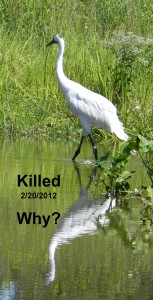 original wild western flock. The migrating adult bird was traveling with two additional whooping cranes before being shot with a high-power rifle as it was standing in a corn field. The Whooping Crane Conservation Association will pay a reward not to exceed $10,000 to anyone who provides information which leads to the conviction of any individuals responsible for the killing of the whooping crane which took place on the afternoon of Friday, April 20, 2012 along 354th Avenue, approximately 17 miles southwest of Miller, South Dakota.
original wild western flock. The migrating adult bird was traveling with two additional whooping cranes before being shot with a high-power rifle as it was standing in a corn field. The Whooping Crane Conservation Association will pay a reward not to exceed $10,000 to anyone who provides information which leads to the conviction of any individuals responsible for the killing of the whooping crane which took place on the afternoon of Friday, April 20, 2012 along 354th Avenue, approximately 17 miles southwest of Miller, South Dakota.
The purpose of all rewards is to encourage the public to share information they might have about criminal activities involving whooping cranes. Federal, State, Provincial, and other public law enforcement personnel, and criminal accomplices who turn “states” evidence to avoid prosecution, shall not be eligible for this reward. If more than one informant is key to solving a specific case, the reward will be equally divided between the informants.
Anyone with information should call either the 24-hour “Turn in a Poacher Hotline” at 1-888-OVERBAG (683-7224) or the U.S. Fish & Wildlife Service at 605-224-9045 to report any information which will aid officers in the apprehension of the shooter. Callers can remain anonymous.
Eleven whooping cranes of the experimental Eastern Migratory population and non-migratory Louisiana population have been shot in the last two years. The Alabama case of January 2011 is still active. The Louisiana shootings have been solved by State Law Enforcement personnel and a reward will not be involved. One case is still active in Indiana. In Indiana the State has offered $2,500, the Fish and Wildlife Service $2,500 and the Humane Society $2,500 in reward.
Donations (which are tax-deductible) are being requested for the Whooping Crane Conservation Association’s Reward Account. The public is encouraged to donate to this fund. Donations should be mailed to Whooping Crane Conservation Association, 2139 Kennedy Avenue, Loveland, CO, USA 80538 or to donate by credit card click on the link: https://whoopingcrane.com/whooping-crane-shot-10000-reward/
Whooping Crane Update –April 12, 2012
April 12, 2012Aransas National Wildlife Refuge has completed its update report on the status of whooping cranes on the refuge, migration progress, current habitat conditions, and status on birds found dead. To read the full report click on the following link:
Aransas National Wildlife Refuge Update Report (041212_WCUpdate)
Whooping Cranes Begin Migration to Canada
April 12, 2012An estimated 115 whooping cranes remain on, or near the Aransas National Wildlife Refuge in Texas according the U.S. Fish and Wildlife Service. Aransas Refuge officials report that, “Data from GPS-marked whooping cranes also indicates many of the birds have begun their migration. Approximately two thirds of the marked birds have left the Texas coast. Departure dates for those cranes in migration range between the 5th of March and 10th of April with 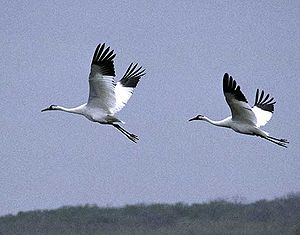 an average departure date of 29 March. To date, none of the marked birds have arrived at Wood-Buffalo National Park. We continue to download data from the radio-marked birds, as well as receive information from actual sightings.”
an average departure date of 29 March. To date, none of the marked birds have arrived at Wood-Buffalo National Park. We continue to download data from the radio-marked birds, as well as receive information from actual sightings.”
Reports of whooping crane sightings made to the Whooping Crane Conservation Association indicate migrating birds are in every U.S. state and Canada along the migration route. The migration appears to be earlier this year and may be due to the warmer weather. Hopefully the nesting grounds at Wood Buffalo National Park, Canada will be in suitable condition when the whoopers arrive there. here.
For those whoopers currently remaining on Aransas Refuge, habitat conditions appear to be improving. Aransas personnel report that, “As of April 11, the monthly precipitation totals for Aransas National Wildlife Refuge are 1.19 inches. Salinity levels in San Antonio Bay continue to remain under 20 parts per thousand (ppt) and are currently recorded at 16.5 ppt. Increased precipitation and fresh water inflows from Central Texas are helping to improve conditions in the marsh but the refuge is still not to pre-drought conditions.”
“Lobstick” Worlds Oldest Whooping Crane
March 30, 2012Tom Stehn, retired Chair of the International Whooping Crane Recovery Team has authored a captioned slide show about “Lobstick” the whooping crane. Lobstick is believed to be the oldest whooping crane in the world. He will be 34 years old this June. Lobstick, a male, is a member of the Aransas-Wood Buffalo whooping crane population. He has often been in the news concerning his role as a whooper parent and during his migratory flights from his Canada nesting habitat to the Texas wintering area.
To view the slide show, please visit “Journey North’s” outstanding educational web site. Click this link to see photos and read Lobstick’s astonishing story.
